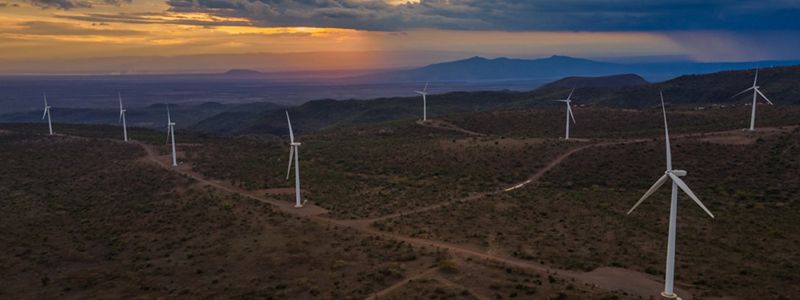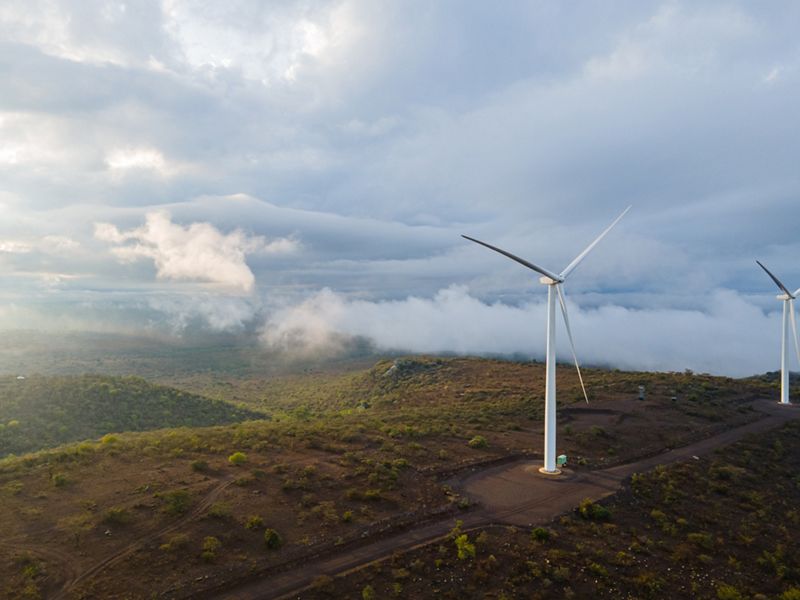
Winds of Change Aerial view of Kipeto Energy wind farm in Kenya. © Bobby Neptune
On a misty April morning in the southern foothills of Kenya’s Great Rift Valley, the village of Esilanke looks as if it were built in the clouds. A light breeze begins to clear the fog, revealing the striking ridges popping out of the vast savanna grassland, about 30 miles southwest of Nairobi. In the near distance, tall towers come into view—the slowly spinning blades of the country’s second-largest wind power plant, the Kipeto Wind Power Project. The sprawling wind farm hosts 60 turbines that together generate 100 megawatts for the national grid—enough to power tens of thousands of homes.
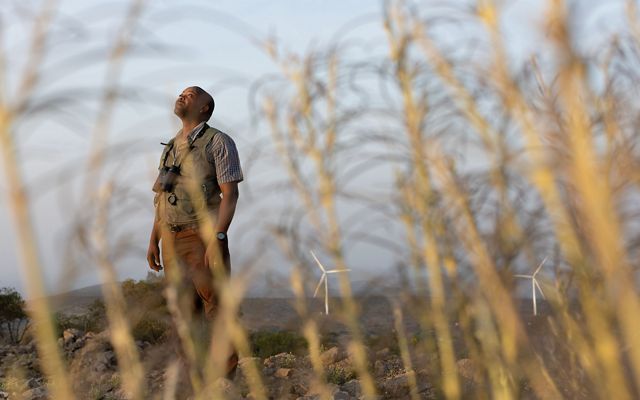
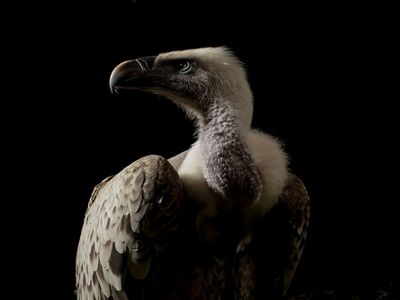
Every day, Joseph Mureesi leaves his house in Enarau and walks to Kipeto to watch over the birds that share this landscape. His job at the wind farm—he is a biodiversity monitor at Kipeto—is to protect the thousands of birds that risk colliding with the turbines as they fly through the area.
Kipeto lies along a migratory flyway traversed by at least 62 species of birds, and likely dozens more. Its topography of steep ridges and open valleys allows soaring birds like raptors, storks and pelicans to ride pillars of rising warm air without flapping their wings, allowing them to conserve energy.
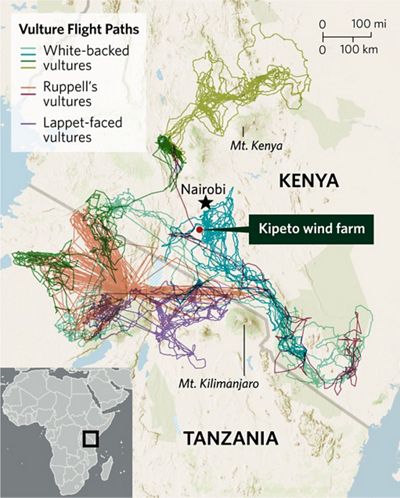
“We are here because of the wind,” says Mureesi. “It is the wind that brings us fortune, and it is the same wind that soaring birds use to aid their flight along these terrains.” When Mureesi spots these birds, his order over a walkie-talkie can shut down individual turbines in less than a minute, keeping the giant blades still until the sky is clear.
Finding a balance between renewable energy and conservation in Kenya
In his first address after being sworn in as Kenya’s president in September 2022, William Ruto pledged to have the country running entirely on renewable power by 2030. And given the country’s topography and record-breaking wind speeds, wind energy will play a critical role in helping light up hundreds of thousands of homes. Wind power is already Kenya’s third-largest electricity producer, representing 16% of total generation.
But conservationists—though supportive of renewable energy as a solution in the global race against climate change—have strong concerns. Many windy areas across the country, including the Rift Valley region, are critical for migratory birds that live in and pass through Kenya every year.
Wind farms like Kipeto sit in a delicate spot trying to balance development and conservation in a country where energy demand is constantly rising. All eyes are on this new facility, where an innovative plan is trying to resolve conflicts between renewables and biodiversity and potentially find a balance others can follow.
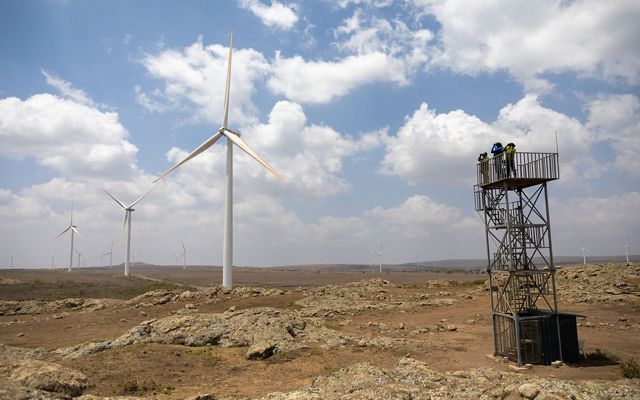
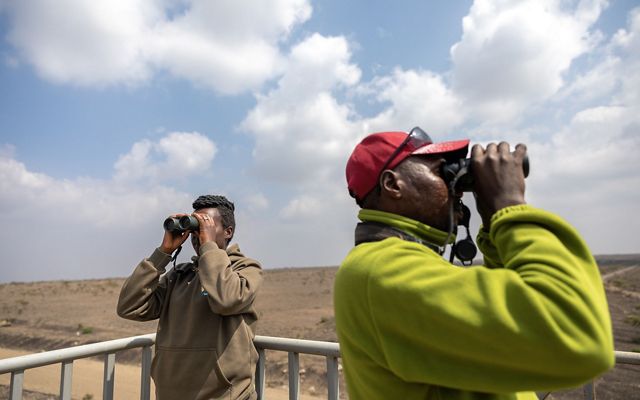
Boasting a series of beautiful lakes, escarpments and volcanoes, Kenya’s Great Rift Valley is a lowland that stretches from Lake Turkana, 400 miles northwest of Nairobi, through to the Tanzania border and Lake Natron. Approximately 12.8 million people live within this striking landscape, including the Indigenous Maasai community, who live as pastoralists. The valley is also known for its high wind speeds, particularly along Lake Turkana, the site of another wind farm.
As interest in local wind development grew, the International Union for Conservation of Nature in 2015 classified two local bird species—the white-backed vulture and Ruppell’s griffon vulture—as critically endangered. These large birds serve as the cleanup crews for Kenya’s vast open landscapes, and they are built for this task: They spend most daylight hours circling high over the savannas; they have excellent vision at long distances, and their bodies are adapted to survive in the low-oxygen atmosphere of high altitudes. They descend to feed on carrion, the carcasses of dead animals. Their heads are bald to regulate their body temperature and prevent germs from collecting in feathers as they dissect each meal, and their digestive systems are adapted to process rotting flesh and organs.
Local vulture populations had been declining for years before the Kipeto wind farm was made operational in 2021. Poisoning was a major culprit: Local herders sometimes leave poisoned animal carcasses in open areas to kill the predators that hunted their goats and cattle. But vultures would often descend on these lethal traps.
As development plans for the wind farm moved forward in the late 2010s, conservation groups became alarmed about its placement within flying range of vulture colonies. Organizations like Nature Kenya, The Peregrine Fund and Kenya Bird of Prey Trust partnered to engage with the energy company about the risks posed by the wind farm.
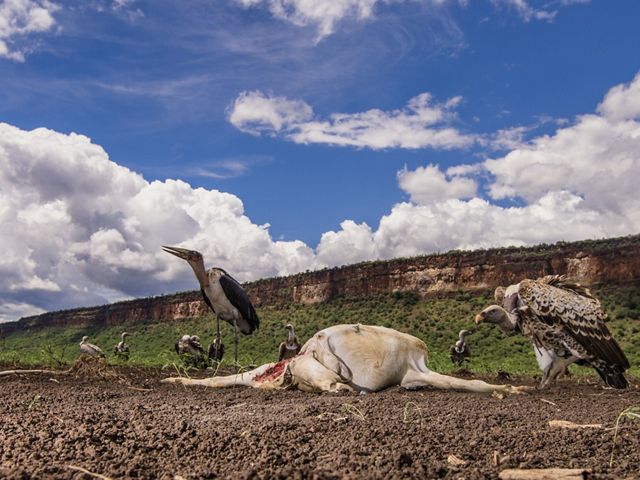
The positioning of the wind farm along the Rift Valley flyway was of “significant” concern, says Paul Gacheru, species and sites manager at Nature Kenya. “A few miles away is an important area that hosts one of the largest colonies of Ruppell’s vultures in the country.” Wind power was relatively new in the area at the time, and ornithologists were concerned about the effects it would have on bird populations.
In response to the conservationists’ concerns, Actis—Kipeto Wind Power Project’s main investor—agreed to work with the bird organizations.
“Kipeto stepped in to integrate biodiversity safeguards in its operations,” says Gacheru. “As bird organizations, we stepped in to see how best we could learn from it and use the lessons from here to inform local solutions to safeguard vultures and other birds.”
With a consortium of partners on board, the Kipeto Wind Power Project hired an ornithologist and developed their Biodiversity Action Plan to look at ways to help prevent bird strikes and protect vultures flying across the wind farm.
Quote: Dominic Kimani
Wind farms are often afraid of the costs involved in hiring biodiversity monitors or even applying technology due to the heavy initial capital investments...
“Wind farms are often afraid of the costs involved in hiring biodiversity monitors or even applying technology due to the heavy initial capital investments,” says Dominic Kimani, the biodiversity manager for the wind farm. “These, however, are unfounded excuses because the benefits of conserving biodiversity outweigh the challenges in the long run.”
Doing that, though, requires some initial money. In 2021, The Nature Conservancy, along with Craftskills Limited, BTE Renewables and Actis, negotiated an agreement to help the local bird population.
The Nature Conservancy and private impact investors provided a $10 million fixed-rate loan to the wind farm, creating an annual funding stream of $500,000 to local nonprofit organizations working to implement the wind farm’s Biodiversity Action Plan over the next 10 years. Projects in that plan include tagging and radio-tracking vultures to analyze their movements, initiating awareness programs within local communities and constructing predator-proof livestock enclosures. The Nature Conservancy is also providing technical assistance to help implement Kipeto’s Biodiversity Action Plan.
“We need to accelerate the deployment of renewable energy, but we also want to make sure that is done in ways that support goals for climate, conservation and communities. We hope to replicate this globally,” says Melissa Weigel, managing director of capital raising at NatureVest, TNC’s impact investing arm. “TNC believes we need to rapidly transition to renewable energy to achieve the Paris Agreement climate goals, and we saw the Kipeto wind farm as part of this.”
“At the outset, we wanted to prove that conservation and commercial viability can coexist,” says James Magor, Actis’ director of sustainability. “We hope that Kipeto provides an example that others can follow, not only in Africa but globally.”
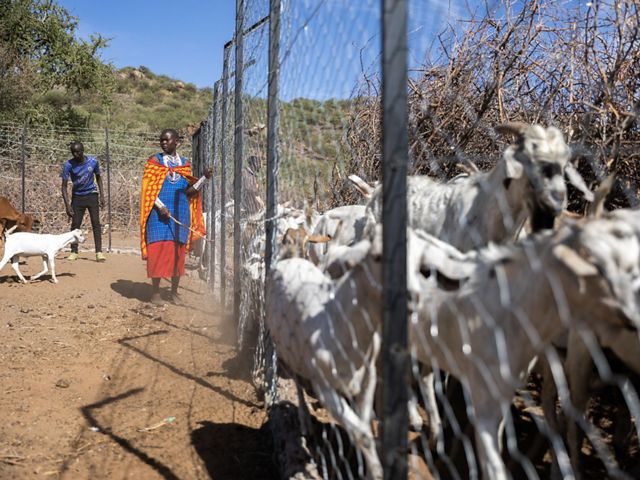
What makes Kipeto a better wind farm
Today, Kipeto is a fully functioning wind farm, but it works differently than most. The landscape of the wind farm is dotted with steel observation towers. Mureesi and 31 other employees spend their days scanning the sky with binoculars, looking for priority species: vultures and other soaring birds. When one comes within a kilometer of a turbine, an observer calls the wind farm’s control station to report the bird’s position. The observer tells the engineer which turbines to shut off. It takes about 45 seconds to bring the massive blades to a stop. Each tower can be controlled separately, allowing the farm to continue producing electricity in its other sectors.
Community members can graze their herds on the wind farm, and they receive a portion of the profits from the turbines on their properties. Some members of the biodiversity team scout the land on and around the wind farm to remove animal carcasses that will attract scavenger birds, like the white-backed vultures that reside about 8 miles northeast in Olerai Conservancy.
Kimani, the biodiversity manager, teaches the wind farm’s spotters to identify and track the soaring birds above. Some, like the Ruppell’s vultures, have become frequent visitors.
“From the data we collect every day, we can even tell the number of specific raptors that have flown past the wind farm in a year,” Kimani says. “There are regular species who fly at specific times of the day, and we can easily predict when they are leaving their nesting sites to fly past the wind farm.”
Every morning at 8 a.m., the biodiversity team meets to review the previous day’s observations and any unique bird sightings. By 9 a.m., the team is expected to be at one of eight vantage points, each pair of spotters carrying a data sheet to record the birds they observe, the time they cross the wind farm and the direction they are headed. They also note whether the bird is flying solo or in a group.
Of the priority species, only two Verreaux’s eagles, one Ruppell’s vulture and a great white pelican have died at the wind farm. In 2022 alone, Ruppell’s vultures accounted for most of the bird-related generator shutdowns: 803 out of 1,023. During that period, Verreaux’s eagles accounted for 105 shutdowns, while martial eagles and steppe eagles accounted for 50 and 21, respectively, and marabou storks and white-backed vultures accounted for even fewer.
Together, the 2022 bird-related shutdowns caused a loss of 0.014% of the year’s budgeted energy production. “The energy lost during these shutdowns is actually negligible, yet the technology saves so many threatened and critically endangered species,” Kimani says.
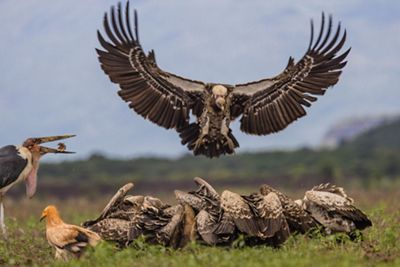
Involving the community to protect endangered vultures
While the bird spotters at Kipeto check the skies over the wind farm, the conservation partners are working off-site to reduce the poisoning of vultures (a single poisoned carcass can kill dozens of vultures). That starts with educating local pastoralists about the dangers of leaving poisoned carrion for predators. Lions or hyenas often strike at night, when the livestock is inside a protective enclosure called a boma—a deterrent made of sticks and thorny wood that’s easily defeated by a persistent predator. So the conservation partners developed plans for a sturdier boma that incorporates metal fencing.
“The new bomas are very effective,” says Nature Kenya’s Gacheru. “Cases of predation have gone down.” The partnership helped families build 47 modern bomas with plans to build 20 more this year in Kwenia, Mosiro and Masai Mara.
Between the bomas and efforts to educate people on the dangers of poisoning, 90,000 community members have received messaging to raise awareness about the threats to vultures.
Some residents help the conservation team compile data by reporting birds that are found poisoned. About 3,000 square miles are monitored by five vulture liaison officers, 65 volunteers and hundreds of rangers trained to identify and remove potentially poisoned wildlife carcasses and vultures.
Once reported, injured birds are taken to rehabilitation facilities, including ones run by Kenya Bird of Prey Trust in Naivasha and Gilgil. So far, seven poisoned vultures have been rescued and returned to the wild. Before being set free, some birds are fitted with a tracking device—an initiative spearheaded by The Peregrine Fund. The data are helping conservationists locate nesting sites and understand how these birds navigate the broader landscape. The tracking program has radio-tagged 14 vultures and 24 raptors.
Anne Trainor, landscape ecologist for TNC in Africa, participates on the Biodiversity Action Committee with other partners. The Nature Conservancy’s role is to offer technical and scientific support to help Kipeto implement its Biodiversity Action Plan. It also involves supporting partner organizations to collect data in a more effective and efficient manner. Right now, Trainor says, the goal is to upgrade from paper note-taking to digital devices for monitoring bird movement and poisoning incidents in real time. That goes for the staff at the wind farm as well as volunteers and rangers working over the horizon.
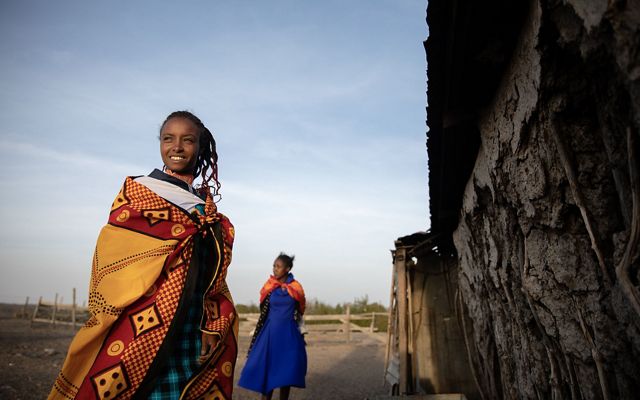
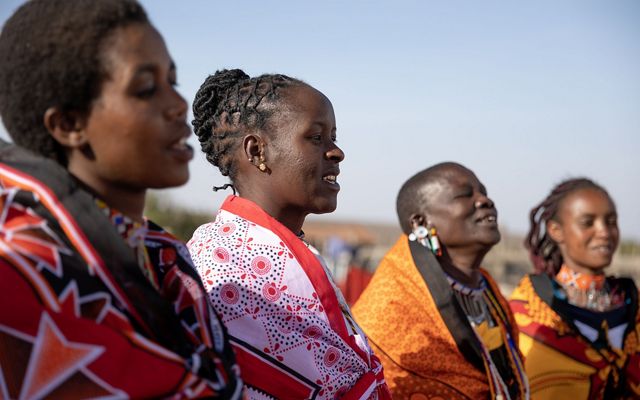
For Jane Naishorua, a wind farm bird monitor just like Mureesi, the birds have created a livelihood and a passion she says she would not trade for anything. They are the reason she wakes up every day to report to work, she says.
Local attitudes have shifted in favor of the vultures, which used to be thought of as dirty birds. “People used to wonder what kind of job I do within the wind farm, but now they seem to understand,” Naishorua says. “It is interesting to see them sometimes running to warn me to stay alert because they have spotted some birds at a distance. Perceptions on vultures are fast-changing, just as the knowledge on birds is increasing.”
People working around this wind farm hope it stands as a model of how the country can upsize wind energy as it races to achieve its aggressive renewable-energy goals. Kimani hopes his team of spotters is just the beginning of a larger movement. “If this works in Kipeto,” he says, “it can work elsewhere.”
About the Creators
Caroline Chebet is a journalist based in Nakuru, Kenya. She reports articles from across Africa for publications including The Standard, Bird Life and Mongabay.
Bobby Neptune is a photographer and filmmaker based in Nairobi who focuses on Africa’s wildlife, lands and people and who specializes in aerial photography.
Sarah Waiswa is a Kenya-based documentary photographer with an interest in exploring identity on the African continent.
Magazine Stories in Your Inbox
Sign up for the Nature News email and receive conservation stories each month.
